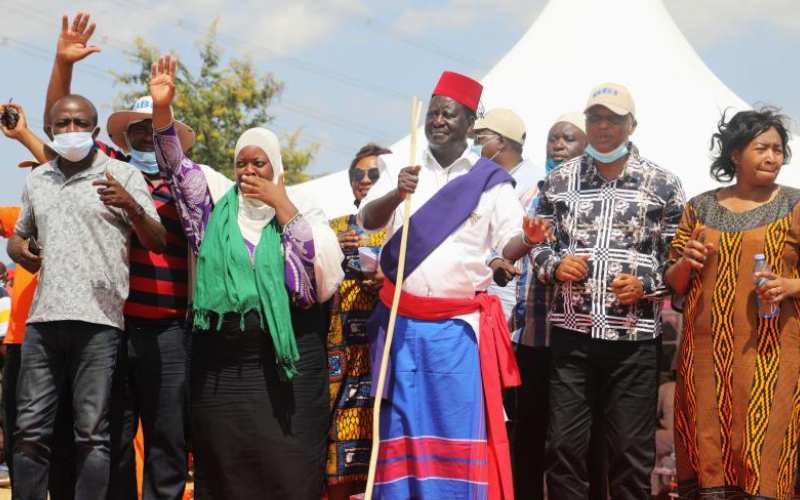×
The Standard e-Paper
Read Offline Anywhere

ODM leader Raila Odinga flanked by other leaders during a tour of Coast region. [Kelvin Karani, Standard]
Unrelenting forays by ODM leader Raila Odinga and Deputy President William Ruto into Coast have stirred a debate over the political future of the region ahead of the 2022 polls.